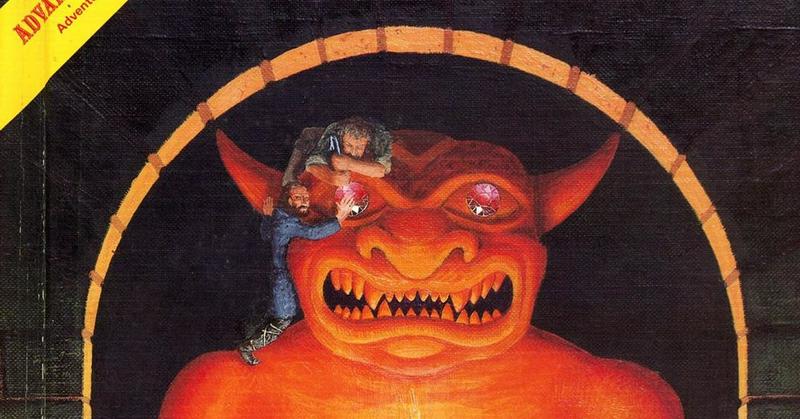History Of Dungeons & Dragons: RPGs Roll +2 Popularity In The '70s
By | August 28, 2018

In 1974, the board game industry was turned upside down with the introduction of Dungeons and Dragons, the first fantasy role-playing game (or RPG) that was created by Gary Gygax and Dave Arneson of Wisconsin. Although the original D&D game was less complex than subsequent ones, it nonetheless captures the attention of the American public with its unique blend of fantasy, storytelling, medieval life and war play that gave players the flexibility to create and develop their own characters. Dungeons and Dragons, the best-known role-playing game, spawned a burst of copycat games and garnered some negative publicity in the 1970s, but has persevered to lead cosplay and role-playing conventions and helped to create a subculture of role-playing gamers.
D&D In The Beginning

In the beginning, there were miniature war games. These were model-based board games in which players manipulated entire armies that were represented by game pieces, such as canons or horses. Jeff Perren created, from this, a medieval-based miniature war game called Chainmail. From this foundation, Arneson tweaked the game so that players controlled individuals rather than entire armies. He showed his variation to his friend, Gygax. Gygax added in an element of fantasy to the game, with wizards and mystics, and an assortment of mythical beasts. The game evolved from a miniature war game to a true role-playing game after undergoing numerous transitions.
D&D Offered A New Approach To Board Games

The games that preceded Dungeons and Dragons all focused on players controlling whole armies and conducting military formations. D&D was different in that the players were given specific characters to play within the game and the group of characters set out on an imaginary epic fantasy adventure. The action was guided by the "dungeon master," a player who served as the storyteller, referee of the game and controlled the setting’s inhabitants. The other players worked together to solve problems, fight battles, collect treasures and gain knowledge. Individually, each character builds their own skills and acquires weapons, magical abilities and knowledge levels to help them improve their playing ability and contribution to the group. This was a novel approach to gaming that had never before been implemented.
D&D Creators Drew Inspiration From A Variety Of Sources

In developing the first fantasy role-playing board game, Gygax and Arneson found inspiration in many places. J.R.R.Tolkien’s The Hobbit and The Lord of the Rings was a huge influence on the game but the game developers tried to downplay it -- and avoid copyright infringement -- by changing some of the terms. The Bible, Greek and Roman mythology, classic literature and world history all impacted the game as well.
D&D Attracted Negative Publicity

When Dungeons and Dragons first came out -- and at various other points in the game’s history -- Christian groups denounced the game for being veiled Satanism and promoting witchcraft and violence. The original player’s manual for D&D did include drawings of naked female fairies, harpies and other half-human mythical creatures. This also drew fire from conservative Christian groups. People who played the game were accused of being devil worshipers and joining the occult. Bowing to pressure, the game developers removed references to devils and demons when they released the game’s second edition but that didn’t please their customer base. They added those references back in for the third edition, then fielded the negative backlash from the religious groups.
Did D&D Play A Role In Mental Illness?

News reports in the seventies claimed that some D&D players became so engrossed in the game that they began having a hard time distinguishing between fantasy and reality. Psychologists stated that Dungeons and Dragons sparked the start of mental illness in some players, or at the very least, fueled an existing mental illness. This idea was further reinforced with the case of James Dallas Egbert III. Egbert, a student at Michigan State University, vanished from his dorm on August 15, 1979. An avid Dungeons and Dragons player, investigators linked his disappearance to the influence of the game. The media was quick to latch on to this story and Egbert’s disappearance was big news at the time. It was believed that Egbert had gone into the school’s maze of steam tunnels believing them to be portals to the D&D fantasy world. In reality, Egbert was a depressed and suicidal young man who had taken some pills and hid in the steam tunnels in a suicide attempt. Egbert’s case fascinated the public and drew attention to the idea that players of role-playing games could become so absorbed in the fantasy of the game that it impacts their reality. The novel and later movie, Mazes and Monsters, was based on Egbert’s case and highlights this controversy.
Dungeons And Dragons’ Legacy Continues

Since its introduction in 1974, Dungeons and Dragons has gone through many changes and editions and continues to grow. Avid D&D players from the 1970s are now playing the game with their children and grandchildren. D&D and the copycat games it inspired, expanded into the online world with the creation of multi-player online role-playing games. The game is also responsible for the introduction and growth of gaming conventions and cosplay events. The fantasy role-playing culture owes much to the 1974 release of D&D.
